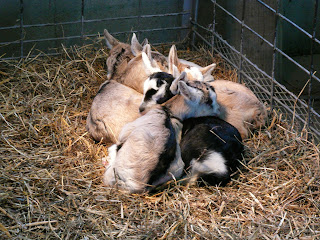So we've been yammering on about food, and drinks, and combinations, and compliments, and taste buds all month. Has it been educational? We hope so. This time around though, we wanted to hone in on some specifics and rather than pair foods based on texture and taste, we thought, "tis the season!" So here are some goaty, cheesey dishes infused with the flavors of the season.
Just click the picture and enjoy!
Fig
Goat Cheese and Honey Stuffed Fig Muffins
Date
Bacon Wrapped Dates with Chorizo and Goat Cheese
Nutmeg, Vanilla & Cinnamon
French Toast with Goat Cheese Drizzle
Cranberry, Orange & Almond
Cranberry Almond Goat Cheese
Pear & Pomegranate
Arugula, Pear, Pomegranate & Goat Cheese Salad
Lavender
Lavender and Goat Cheese Mashed Potatoes
Sage
Sweet Potato, Sage & Goat Cheese Pasta
Ginger
Honey Ginger Ice Cream
Chocolate
Dark Chocolate & Raspberry Goat Cheese Brownies




















